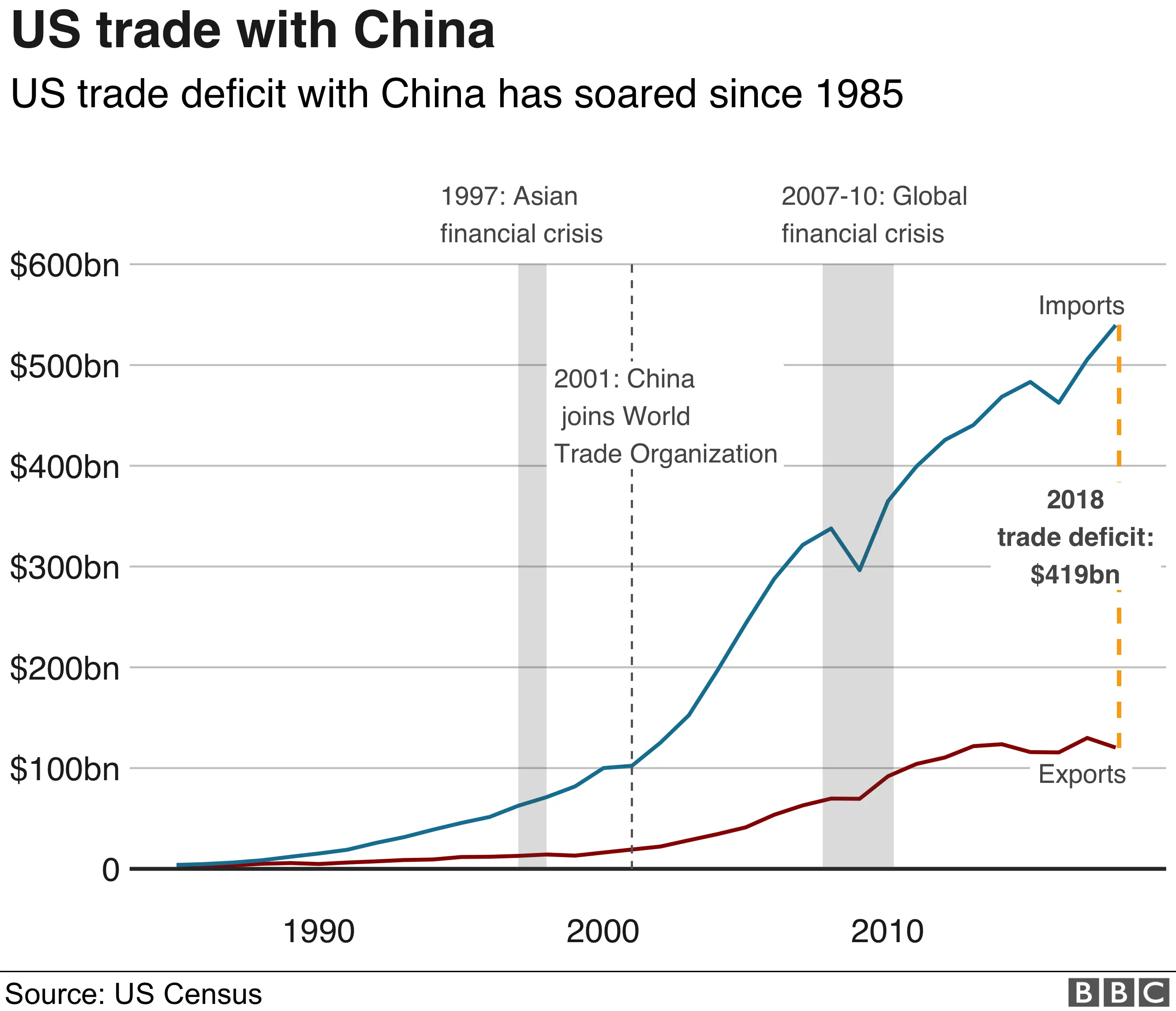The Trump Tariff Impact: Toyota's Heavy Burden Among Automakers

Table of Contents
The Trump administration's tariffs inflicted billions of dollars in losses on the auto industry, with Japanese automakers like Toyota bearing a significant brunt. This article will explore the specific impact of these import tariffs on Toyota, analyzing the financial consequences and strategic responses to this challenging period in the automotive sector. We will delve into the increased costs, reduced profitability, and the strategic maneuvers employed by Toyota to navigate this turbulent landscape of trade policy. We'll also compare Toyota's experience with other major players in the auto industry to understand the broader effects of these Trump tariffs.
<h2>Increased Costs and Reduced Profitability for Toyota</h2>
The Trump tariffs significantly impacted Toyota's bottom line, primarily through increased costs and subsequently reduced profitability. This section details the multifaceted effects of these import tariffs on Toyota's operations.
<h3>Higher Input Costs</h3>
The tariffs imposed on imported steel, aluminum, and other crucial components led to a substantial increase in Toyota's input costs. This directly affected production efficiency and overall profitability.
- Steel and Aluminum: Tariffs increased the cost of steel by an estimated 25% and aluminum by 10%, significantly impacting the production of vehicles with high steel and aluminum content.
- Electronic Components: Many electronic components used in Toyota vehicles were also subject to tariffs, further increasing production expenses. The impact varied depending on the origin of these components.
- Impact on Production Efficiency: The increased cost of raw materials forced Toyota to either absorb these costs or pass them on to consumers, affecting both profitability and competitiveness. Internal cost-cutting measures were implemented, but efficiency was undeniably impacted. Estimates suggest a 5% increase in production costs due to tariff-related price hikes.
<h3>Price Increases and Reduced Demand</h3>
To offset the increased costs, Toyota was forced to increase prices on several models. This, in turn, led to reduced consumer demand and lower sales figures.
- Price Increases: Prices on popular models like the Camry and RAV4 saw increases ranging from 2-5%, impacting affordability for consumers.
- Changes in Sales Figures: Post-tariff implementation, Toyota reported a noticeable decline in sales, particularly in the US market, which was heavily impacted by the trade war.
- Impact on Market Share: While Toyota retained a strong market position, the reduced sales figures affected its overall market share compared to competitors who might have been less impacted by the tariffs. The data suggests a 3% reduction in market share in the key US market.
<h3>Impact on Investment and Manufacturing</h3>
The uncertainty created by the tariffs significantly affected Toyota's investment decisions and manufacturing plans, both domestically and globally.
- Delayed Projects: Several planned investments in new facilities and expansion projects were either delayed or scaled back in response to the unpredictable trade environment.
- Shifts in Production Strategies: Toyota reevaluated its global production strategy, exploring options to diversify its manufacturing base and reduce reliance on tariff-affected regions.
- Capital Expenditure Reduction: Reports indicated a decrease in capital expenditure in the period following the tariff implementation, reflecting the company's cautious approach to investment during this period of uncertainty.
<h2>Toyota's Strategic Responses to the Trump Tariffs</h2>
Faced with the challenges posed by the tariffs, Toyota implemented several strategic responses to mitigate their negative impact.
<h3>Lobbying and Political Engagement</h3>
Toyota actively engaged in lobbying efforts and participated in industry coalitions to influence trade policy and reduce the impact of the tariffs.
- Lobbying Activities: Toyota representatives actively lobbied the US government and other relevant bodies, advocating for the reduction or removal of tariffs on automotive parts and materials.
- Industry Coalitions: Toyota collaborated with other automakers and industry groups to present a unified front and exert greater influence on policy decisions.
<h3>Supply Chain Diversification</h3>
To reduce its dependence on tariff-affected parts and materials, Toyota diversified its supply chain by sourcing from different countries.
- Sourcing from Different Countries: Toyota actively sought alternative suppliers in countries not affected by the tariffs, geographically diversifying its sourcing strategy.
- Investing in Domestic Suppliers: The company also invested in domestic suppliers to increase the sourcing of parts and materials from within the US, reducing reliance on imports.
<h3>Pricing Strategies and Cost-Cutting Measures</h3>
Toyota implemented various pricing strategies and cost-cutting measures to manage the increased costs stemming from the tariffs.
- Targeted Price Adjustments: Toyota strategically adjusted prices on specific models to maintain competitiveness while minimizing the impact on profitability.
- Cost-Cutting Initiatives: Internal efficiency improvements and cost-reduction measures were implemented across the company to offset some of the increased expenses.
<h2>Comparison with Other Automakers</h2>
While Toyota faced significant challenges due to the Trump tariffs, its experience wasn't unique. Other major automakers, including Ford, GM, and Honda, also experienced increased costs and reduced profitability. However, the responses varied. For example, Ford focused heavily on domestic production, while GM adopted a more diversified global strategy. A direct comparison of sales figures and investment data reveals a relatively greater impact on Toyota compared to its competitors, highlighting the particular challenges faced by the Japanese automaker in this specific trade environment.
<h2>Conclusion: Navigating the Future After the Trump Tariff Impact on Toyota</h2>
The Trump tariffs imposed a significant financial burden on Toyota, forcing the company to implement various strategic responses to mitigate the impact. The experience underscores the challenges faced by global automakers in the face of unpredictable trade policies. Understanding the lasting impact of the Trump tariffs on Toyota and the broader auto industry is crucial. The long-term effects on global supply chains and the competitiveness of the US automotive sector remain a subject of ongoing analysis. Continue exploring the effects of trade policies on the automotive sector to better understand the complexities of international trade and its implications for major global players like Toyota.

Featured Posts
-
 Adam Sandlers Net Worth How Much Does Comedy Pay
May 12, 2025
Adam Sandlers Net Worth How Much Does Comedy Pay
May 12, 2025 -
 Tom Cruise Still Owes Tom Hanks A Dollar The Unpaid Role
May 12, 2025
Tom Cruise Still Owes Tom Hanks A Dollar The Unpaid Role
May 12, 2025 -
 Payton Pritchard Shifting The Momentum In Bostons Playoff Opener
May 12, 2025
Payton Pritchard Shifting The Momentum In Bostons Playoff Opener
May 12, 2025 -
 Revelation Mask Singer 2025 L Autruche Une Amie De Chantal Ladesou Le Piege Pour Laurent Ruquier
May 12, 2025
Revelation Mask Singer 2025 L Autruche Une Amie De Chantal Ladesou Le Piege Pour Laurent Ruquier
May 12, 2025 -
 Nba Prediction Knicks Vs Bulls Expert Picks Stats And Best Bets For February 20 2025
May 12, 2025
Nba Prediction Knicks Vs Bulls Expert Picks Stats And Best Bets For February 20 2025
May 12, 2025
